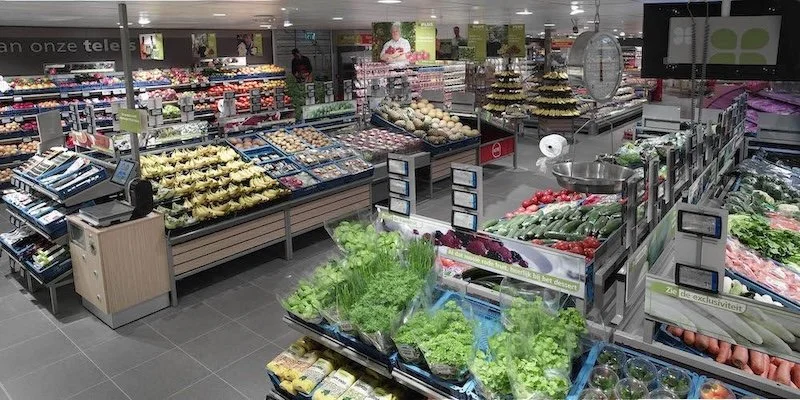Using SWOT analysis to identify opportunities and threats for retailers
SWOT analysis is a useful strategic planning tool for retailers in the UK to evaluate their businesses.
By examining internal strengths and weaknesses, and external opportunities and threats, retailers can identify areas for improvement and potential growth. This article will examine how conducting a SWOT analysis can provide valuable insights for retail businesses.
Assessing Internal Factors: Strengths and Weaknesses
Any SWOT analysis example will say you must begin by looking within the business to determine its strengths and weaknesses. Strengths are considered as positive attributes, competitive advantages, and areas where the business excels. Some strengths retailers may identify include a strong brand reputation, loyal customer base, prime store locations, unique product offerings, and skilled staff.
Weaknesses are internal factors that represent disadvantages or areas in need of improvement. Examples for retailers may include high turnover of sales staff, inadequate inventory management systems, declining brand identity, lack of online presence, or poor delivery logistics. Understanding these weaknesses is key for identifying problems to address.
Evaluating External Factors: Opportunities and Threats
The second part of a SWOT analysis involves reviewing external opportunities that retailers can leverage and threats that could negatively impact operations. Opportunities refer to favourable external factors, interesting trends, and changes in the industry or target markets that businesses can capitalise on.
For UK retailers, opportunities may include expanding e-commerce channels, introducing new product lines, entering new geographic markets, adopting advanced technologies like AI and automation, collaborating with other brands, or acquiring competitors.
Threats encompass potential external roadblocks that could hinder performance. Retailers should assess threats like increasing online competition, rising overhead costs, supply chain disruptions, changing consumer preferences and shopping habits, economic declines, unfavourable government policies, and even extreme events like pandemics or natural disasters.
Informing Strategic Planning
The insights gleaned from a SWOT analysis can help retailers formulate strategies to leverage strengths, overcome weaknesses, pursue opportunities, and mitigate threats. It provides perspective on growth areas as well as problems requiring attention. Strategies may involve expanding online presence to increase market reach, streamlining supply chains to control costs, offering exclusive product ranges to boost competitiveness, or rebranding and marketing to attract new demographics.
Retailers should conduct SWOT analyses on a regular basis as internal and external factors evolve over time. Annual reviews help businesses stay alert to changes in the market and make timely adjustments to strategy. It is also helpful to perform a SWOT analysis before major decisions, investments, or launches of new initiatives. Consulting staff across the organisation during the process yields a more holistic perspective.
While SWOT analysis provides a high level overview, retailers can perform more detailed assessments on specific areas like operations, finance, HR, inventory, suppliers, sales channels, and advertising to uncover nuanced strengths, weaknesses, opportunities and threats. An honest evaluation of all internal and external factors is key for an effective SWOT analysis that provides actionable insights.
Implementing an agile strategy informed by continual SWOT assessments will help UK retailers maximise opportunities, mitigate risks, and evolve their businesses to thrive amidst an increasingly complex and competitive retail landscape. Regular analysis facilitates nimble decision-making so retailers can capitalise on emerging trends, overcome challenges, and strengthen their overall market position.
Prioritising Areas to Address
Once a SWOT analysis has highlighted priorities, retailers must determine where to focus their efforts and resources. It is unlikely that a business can address every weakness, opportunity, and threat at once.
Retailers should prioritise areas that have the greatest potential impact on achieving strategic goals. For example, shoring up cybersecurity may take precedence over store remodels for retailers aiming to build customer trust. Seeking funding to develop an e-commerce platform may outweigh adding new product lines for bricks-and-mortar stores hoping to shift online.
Risk assessments should inform priority setting. Retailers must determine which weaknesses and threats pose immediate risks that could severely impact operations if not addressed quickly. At the same time, businesses should consider quick wins that can be capitalised on right away before opportunities disappear.
Collaborating Across the Business
It takes input from stakeholders across the organisation to conduct an insightful SWOT analysis and successfully execute on findings. Retailers should involve store managers, sales associates, inventory staff, buyers, marketing professionals, finance teams, online fulfilment crews, and other personnel.
Frontline workers often have a pulse on customer preferences that executives may lack. Finance provides data on costs and potential budgets. Marketing assesses brand perception and advertising effectiveness. Operations oversees the execution of strategies. Cross-functional collaboration allows retailers to gain a comprehensive view of their standing.
Ongoing re-evaluation and adjustment will be critical, as the retail sector can shift rapidly. But with an accurate SWOT assessment and participation from all stakeholders, UK retailers can identify and capitalise on the most impactful pathways to profitability and success.































Continue reading…